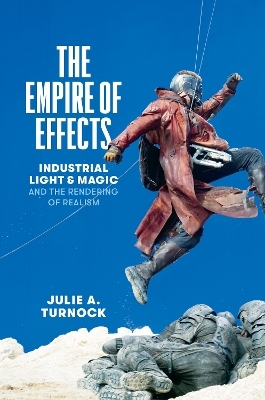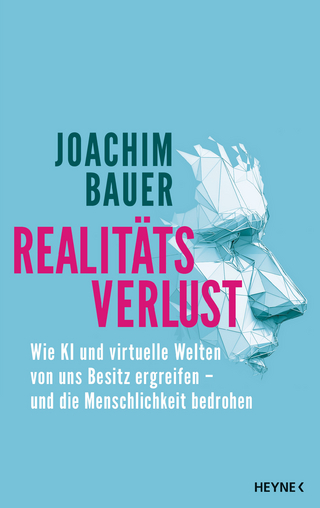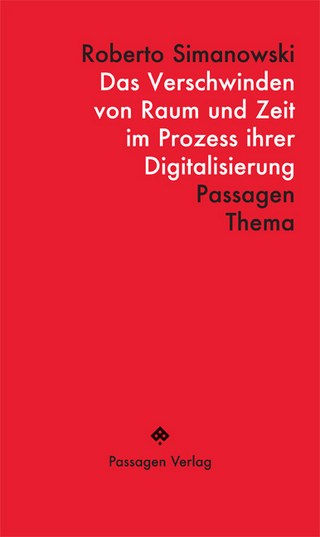
The Empire of Effects
Seiten
2023
University of Texas Press (Verlag)
978-1-4773-2897-2 (ISBN)
University of Texas Press (Verlag)
978-1-4773-2897-2 (ISBN)
Just about every major film now comes to us with an assist from digital effects. The results are obvious in superhero fantasies, yet dramas like Roma also rely on computer-generated imagery to enhance the verisimilitude of scenes. But the realism of digital effects is not actually true to life. It is a realism invented by Hollywood-by one company specifically: Industrial Light & Magic.
The Empire of Effects shows how the effects company known for the puppets and space battles of the original Star Wars went on to develop the dominant aesthetic of digital realism. Julie A. Turnock finds that ILM borrowed its technique from the New Hollywood of the 1970s, incorporating lens flares, wobbly camerawork, haphazard framing, and other cinematography that called attention to the person behind the camera. In the context of digital imagery, however, these aesthetic strategies had the opposite effect, heightening the sense of realism by calling on tropes suggesting the authenticity to which viewers were accustomed. ILM's style, on display in the most successful films of the 1980s and beyond, was so convincing that other studios were forced to follow suit, and today, ILM is a victim of its own success, having fostered a cinematic monoculture in which it is but one player among many.
The Empire of Effects shows how the effects company known for the puppets and space battles of the original Star Wars went on to develop the dominant aesthetic of digital realism. Julie A. Turnock finds that ILM borrowed its technique from the New Hollywood of the 1970s, incorporating lens flares, wobbly camerawork, haphazard framing, and other cinematography that called attention to the person behind the camera. In the context of digital imagery, however, these aesthetic strategies had the opposite effect, heightening the sense of realism by calling on tropes suggesting the authenticity to which viewers were accustomed. ILM's style, on display in the most successful films of the 1980s and beyond, was so convincing that other studios were forced to follow suit, and today, ILM is a victim of its own success, having fostered a cinematic monoculture in which it is but one player among many.
Julie A. Turnock is Professor of Media and Cinema Studies at the University of Illinois, Urbana-Champaign. She is the author of Plastic Reality: Special Effects, Technology, and the Emergence of 1970s Blockbuster Aesthetics.
Acknowledgments
Introduction: The ILM Version
1. ILM Versus Everybody Else: Effects Houses in the Digital Age
2. Perfect Imperfection: ILM’s Effects Aesthetics
3. Retconning CGI Innovation: ILM’s Rhetorical Dominance of Effects History
4. Monsters are Real: ILM’s International Standard of Effects Realism in the Global Marketplace
5. That Analog Feeling: Disney, Marvel Studios, and the ILM Aesthetic
Conclusion: Unreal Engine: ILM in a Disney World
Appendix: List of Films Mentioned in the Text
Notes
Bibliography
Index
| Erscheinungsdatum | 22.08.2023 |
|---|---|
| Verlagsort | Austin, TX |
| Sprache | englisch |
| Themenwelt | Kunst / Musik / Theater ► Film / TV |
| Sozialwissenschaften ► Kommunikation / Medien ► Medienwissenschaft | |
| ISBN-10 | 1-4773-2897-1 / 1477328971 |
| ISBN-13 | 978-1-4773-2897-2 / 9781477328972 |
| Zustand | Neuware |
| Informationen gemäß Produktsicherheitsverordnung (GPSR) | |
| Haben Sie eine Frage zum Produkt? |
Mehr entdecken
aus dem Bereich
aus dem Bereich
wie KI und virtuelle Welten von uns Besitz ergreifen – und die …
Buch | Hardcover (2023)
Heyne (Verlag)
22,00 €
Buch | Softcover (2023)
Passagen (Verlag)
18,00 €


